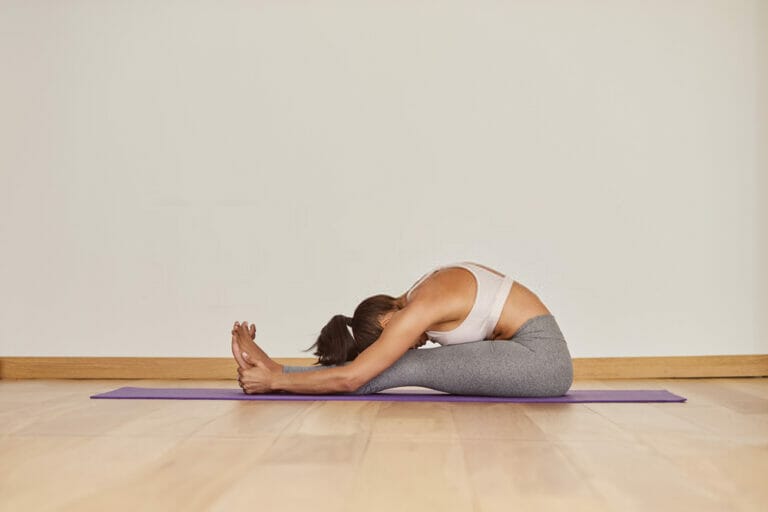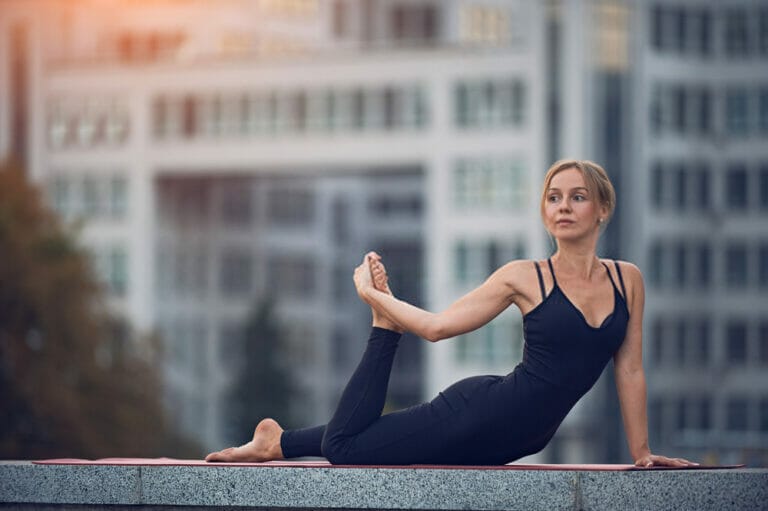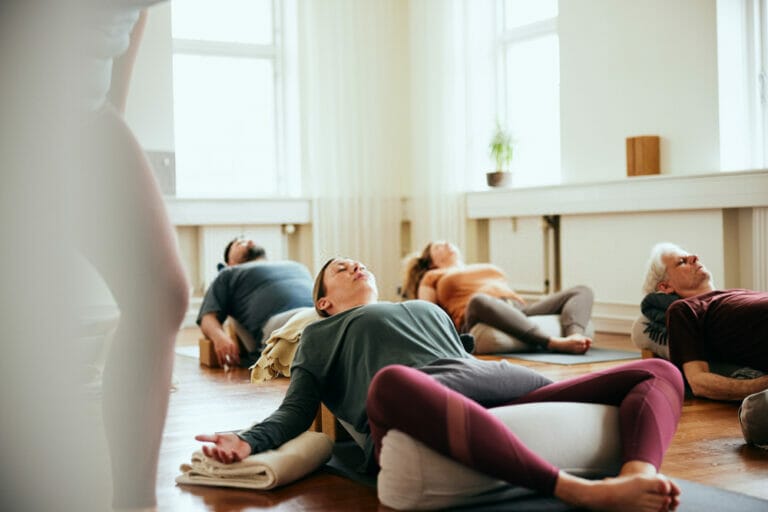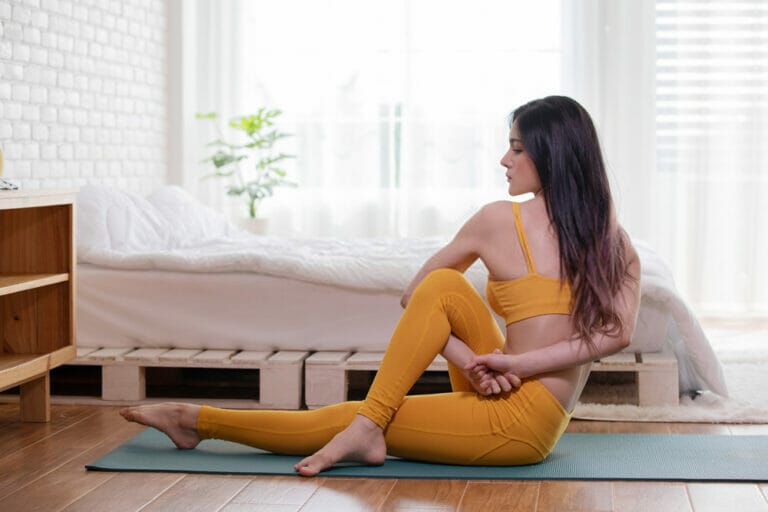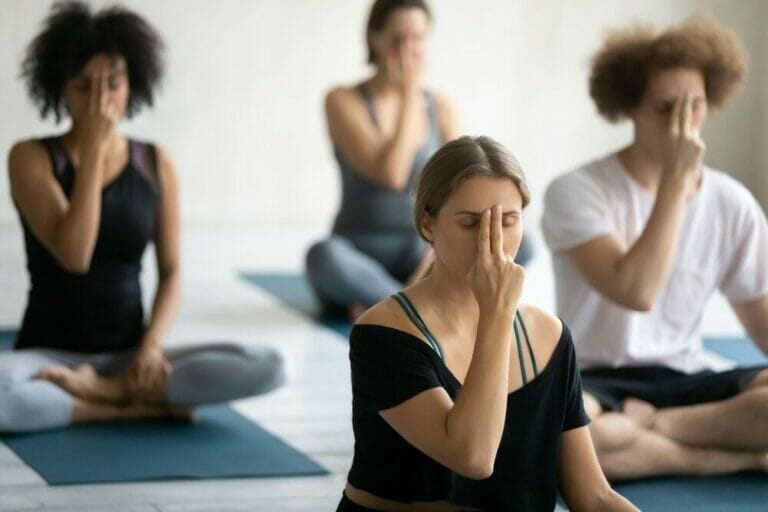Parsvottanasana or Intense Side Stretch Pose – Pyramid Pose
Parsvottanasana, or Intense Side Stretch Pose, is a demanding side stretch that demands strength, stability, presence, and patience to execute correctly.
Parsvottanasana, also known as Pyramid Pose, is all about commitment in the legs—creating a sturdy foundation.
The pose is more of a hamstring (and hip) opening than a side body stretch, and it should be taken deliberately and gradually with the assistance of a wall or block.
When performed correctly, the benefits of Parsvottanasana include stretching the spine, strengthening the legs, stimulating digestive organs, and calming the mind.

The name parsvottanasana comes from Sanskrit. It has four terms that help to define its meaning and importance.
The word ‘Parva’ means ‘side,’ ‘Ut’ means ‘intense,’ ‘tan’ implies ‘to stretch,’ and ‘Asana’ means ‘position.’
Parsvottanasana is best understood as a transition from Parivrtta Trikonasana to Utthita Trikonasana. Bending forward and balancing in this inversion shapes the body into a pyramid, hence the name.
- Level of Difficulty – Intermediate
- Duration – 2 minutes
- Sanskrit name: Parivrtta Parsvakonasana
- English translation: Pyramid Pose
Preparation
- Before you attempt this pose, try doing these poses first.
- Tree pose (Vrikshasna)
- Cow Face Pose (Gomukhasana)
- Standing forward bend (Uttanasana)
- Extended Triangle pose (Utthita Trikonasana)
- Extended Side Angle Pose (Utthita Parsvakonasana)
How to do it:
- Stand on your yoga mat in mountain pose.
- Maintain a distance of 3-4 feet between your legs.
- Turn your right foot out to 90 degrees and your left foot out to 45 degrees. Turn your upper body to the right side at the same time.
- Extend your arms to the side, parallel to the ground.
- Internally rotate your shoulders and bring your palms to the reverse prayer stance.
- Draw your shoulders back and open your chest. Inhale deeply, stretching your spine.
- Exhale and bend forward, pushing the hips back while keeping the pelvic square.
- Exhale and bend forward, pushing the hips back while keeping the pelvic square.
- Bring your chest to your shin and your belly to your thigh.
- Hold the position for 60 seconds while relaxing your neck.
- Inhale and elevate the torso, keeping the rear heel firmly planted on the ground.
- Let go of the arms and place them on your hips.
- Rep on the opposite side as well.
Tips
- It is challenging to find balance in Parsvottanasana at first, therefore take a wider stance while starting the position.
- Beginners also struggle with maintaining the stiffness of the back leg. Softening the front knee will be beneficial to achieve the stretch with the leg and inner groin fully.
Modifications
Use blocks: Place two blocks beside the front foot, one on each side. Instead of holding the blocks behind your back, place your hands on them. It will help you maintain a straight spine when stretching.
Use a chair: Place a chair in front of you. Begin by standing close to the chair and bending forward, grasping the seat with one hand and stretching one leg backwards. Next, rest your head on the chair seat and extend your arms forward.
Yoga strap and a block: To deepen the stretch and maintain balance, hook the yoga strap below your front hip, producing a loop, and keep the other end below your back foot.
Variations
You may try different variations of this pose, including:
Ardha Parsvottanasana (Half Pyramid Pose)
The standing stance in this version is the same as in the pyramid pose. The trunk is bent at the hip like in the airplane pose.
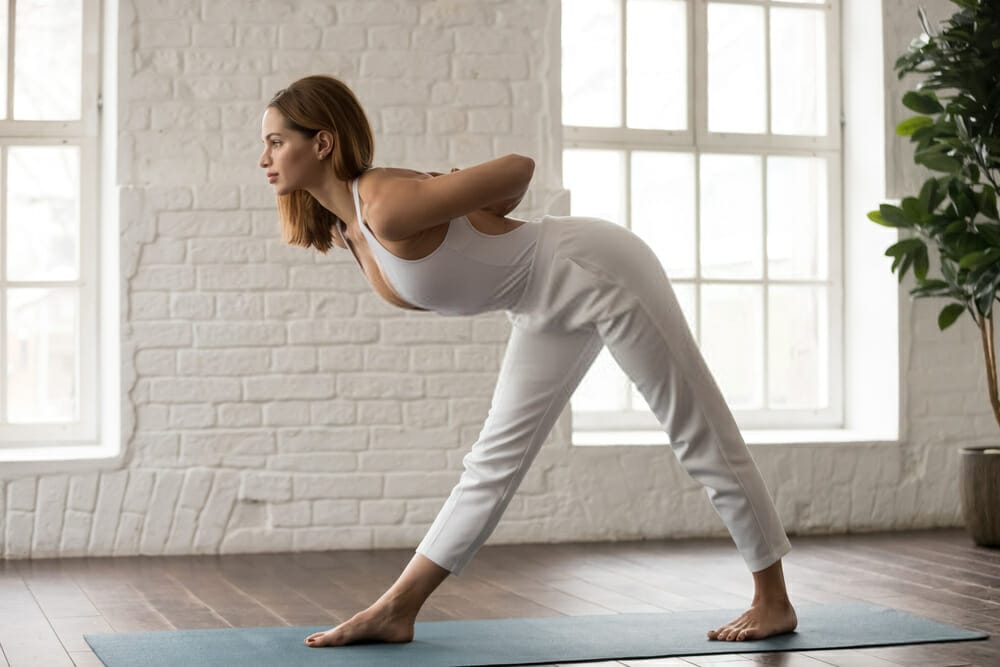
The arms are either dragged backwards and clasped at the lower back or extended down to the floor.
The trunk remains parallel to the floor in the final pose, which aids flexibility for novices with stiff backs.
Utthita Parsvottanasana (Extended Pyramid pose)
This position is achieved by bending the trunk and extending the hands beyond the front leg. The spine is more stretched than the pyramid stance, and the headrests on the shin.
Pyramid Pose with Wrists Wrapped
Except for the hands, all processes stay the same for this variation. Instead of uniting the palms behind the back, alternating the wrists or elbows alternately.
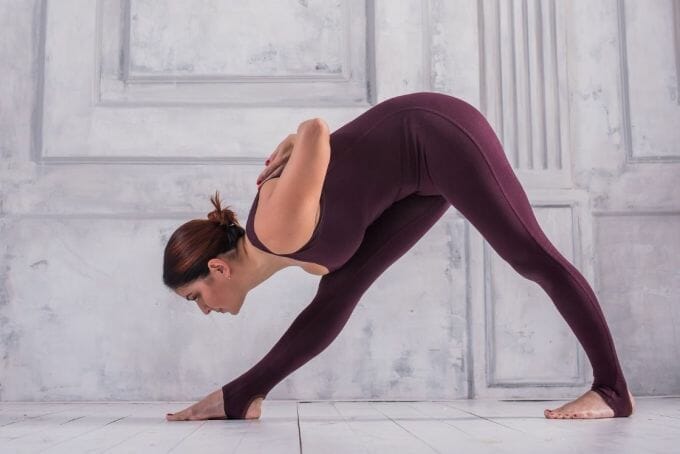
Arms in a pyramid position on the floor
It is a more complex variant of the original position. First, the twisted trunk is bowed towards the front leg, hands on the floor. It is followed by bending the elbows and resting the arms on the floor while straightening the legs.
Precautions
If you have back or shoulder pain, hold each elbow with the opposite hand instead of the reverse prayer position. You can also lay your hands on your hips.
- Knee joints should not be locked. If your hamstrings are strained, bend your knees only slightly.
- Pregnant women should avoid this asana.
- Because this is a balancing asana, do not close your eyes in the final position.
Benefits
Increases flexibility
Parsvottanasana is a total-body exercise. It entails the entire body expanding. Its half modification stance (Ardha Parsvottanasana) is helpful during pregnancy since it stretches the hamstrings, legs, and hip muscles while also stretching the spine. As a result, the asana promotes overall body flexibility.
Promotes body awareness and balance
Because the entire body is willingly stretched in this pose, it promotes balance to the body. The whole weight is evenly distributed and balanced on the core. It enables complete consciousness in the present moment and calm breathing.
Aids digestion
This position entails a forward bend with the head resting on the knee. In the meantime, the abdominal cavity contracts, toning and massaging the abdominal organs—this aids in the proper functioning of the digestive system.
Improves respiration
The asana requires a thorough expansion of the chest and a deep inhale. It enhances deep breathing and aids in healthier respiration.
It relaxes the mind.
Parsvottansana regulates the brain and nerves. It entails physical balancing, which requires attention to the body and brings the mind back to the present—this aids in achieving a state of tranquillity.
Arthritis treatment
Deep stretches are required for this pose. It helps with pain and stiffness in the body and is advisable to treat arthritis in the neck, shoulders, elbows, and wrists.
It improves posture.
It is advantageous to achieve the appropriate posture. For example, people with round and sagging shoulders should practice parsvottanasana. Stretches can improve posture.
It stimulates the reproductive organs.
The asana is also beneficial to the reproductive organs. It even alleviates the pain associated with menstrual cramps.
Conclusion:
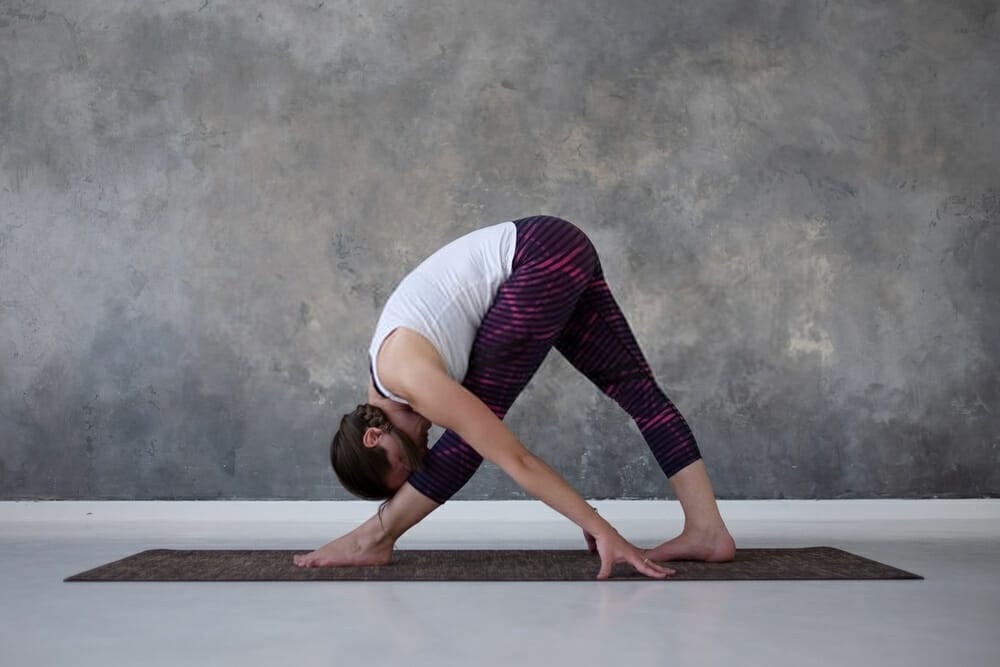
It is a balancing pose that can improve your body’s flexibility and other numerous benefits. If you practice it regularly, it can help you develop the strength of your back and shoulders. It also aids in relieving stiffness in your back and neck.
In addition, it helps open up your chest region, thus enabling you to breathe correctly. So, make sure you practice it regularly to get all its benefits.


